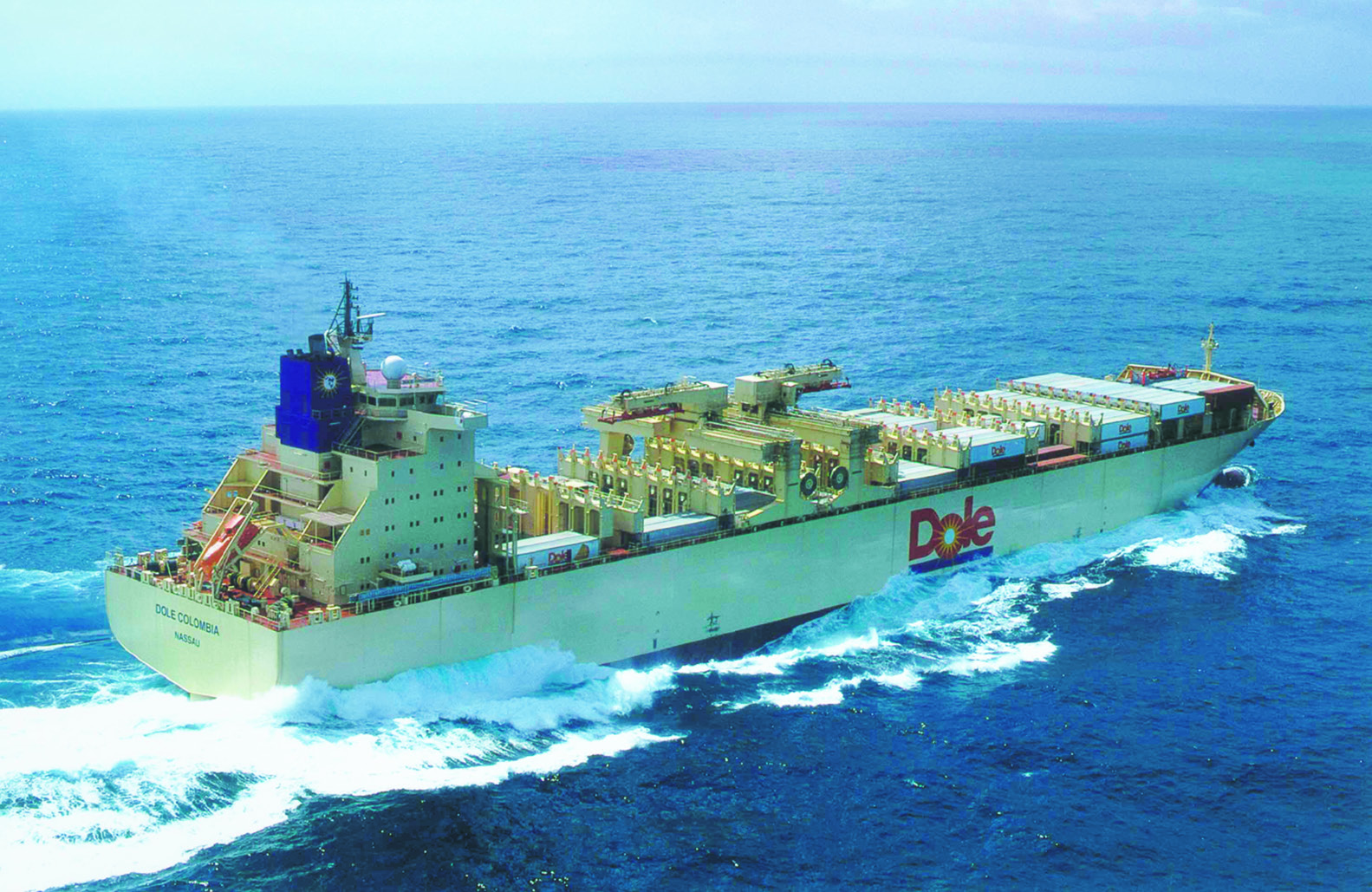

Open-top reefer container vessel DOLE COLOMBIA
In the middle of 1990’s, Dole Fresh Fruit International looked for vessels able to transport 1000 reefer 40ft containers. Gdańsk Shipyard, which built a lot of reefer vessels for Dole, convinced Dole’s technicians to adopt open-top configuration for new ships. However, dieselelectric propulsion and a forward accommodation block were too innovative for them. As a consequence, the contract was signed with Howaldtswerke-Deutsche Werft (HDW) in Kiel, which designed an open-top vessel with classic mechanical propulsion and huge electric plant used mainly during a short period of cooling-down. Two reefer container vessels: DOLE CHILE and DOLE COLOMBIA were delivered in 1999.
The vessel has 6 holds with 10 bays. Only the first hold is fitted with hatch covers. The opentop cargo holds are equipped with cell guides up to 10th tier; containers are stowed 11 high and 11 across. DOLE COLOMBIA can carry 990 refrigerated FEUs: 851 in open-top holds, 95 in the conventional Hold N°1 and 44 on its hatch cover. All reefer containers have both, aircooled and water-cooled condensers. The containers inside holds are cooled by the watercooled condensers connected with the fresh water cooling system by quick coupling pipe connections. The holds are equipped with mechanical supply and natural exhaust. Air is lead to the bottom of the cargo holds to ensure the proper circulation.
Some holds have been prepared to enable reefer containers to be carried under modified atmosphere to slow the fruit ripening process. A membrane type nitrogen generating plant from Unitor is installed on board. The unit consists of two screw compressors and auxiliary components for air treatment, such as oil and water separators, filters and heaters. The heart of the system is the membrane unit which consists of several parallel hollow fibre membranes. Nitrogen is distributed to the holds through an extensive piping system, which ensures a precise and pre-determined amount of nitrogen to be delivered to each container.
Loading and unloading is done by two gantry cranes from Liebherr, driven along rack-andpinion tracks. They consist of a central carrying crossbeam on two supports with a traveling trolley lifting system. The crossbeam is provided with swing-out extensions on both sides. These extensions enable the crane trolley to move out on a fixed support 10m over each of the ship sides.
Propulsion power is provided by a Wärtsilä 8RTA 72U two-stroke diesel engine with 23,920kW output at 97rpm. The direct driven fixed-pitch propeller has 6 blades and a diameter of 6.65m. To optimize manoeuvring capabilities, the ship is equipped with both a bow and stern thrusters, each with an output of 1450kW.
Electrical energy is provided via 5 diesel generators with the total power of 20,930 kVA similar to a power plant able to supply a small city. The main board network is a 6.6 kV medium- voltage system. The main consumers such as: thrusters, transformers for reefer containers, MA compressor distribution and the 440V main switchboard are supplied from the 6.6kV switchboard. The 440V distribution switchboards, which provide power to container plugs, are located in the passageways close to the holds. The switchboards are supplied from 6.6 kV water-cooled transformers located also in the passageways. The spatial arrangement of the switchboards and transformers involves a lot of the detailed solutions in order to accommodate them in the confined spaces of the passageways.
Length, oa: 204.90m, Length, bp: 193.40m, Breadth, mld: 32.24m, Depth, mld: 20.80m, Draught design/maximum: 9.25/10.20m, Deadweight design/maximum: 25,055/30,560dwt, Gross tonnage: 34,840, Propulsion power: 23,920kW, Service speed at 87.7% MCR: 21 knots.
